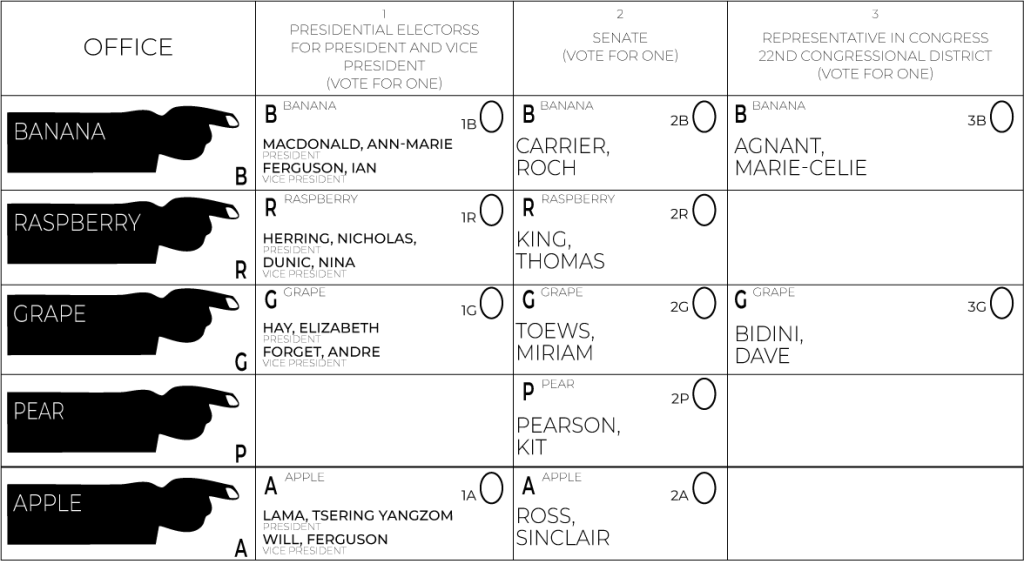2.2 Ballot Design

What information should be included on a ballot? Are the candidate names sufficient? Or should additional information, such as party affiliation, be included? And should the ballots be available in multiple languages? These are important considerations for ballot design, and there are different options available for election administrators.
Basic Ballot Features
Most ballots typically contain the date, the name of the office or electoral district being contested, a list of choices, and instructions for voters (ACE Electoral Knowledge Network, n.d.-h). Election administrators must balance the need to provide information to voters with the risk of creating a ballot that is too complex. At a minimum, ballots should be easy to understand and easy to count.
Listing the Choices
Ballots will list the choices available to voters. This is often done by listing the candidates in alphabetical order. Another option is to list any candidate running for reelection – called an incumbent – at the top of the list. It’s possible that the order of candidates on a ballot can influence election outcomes. For example, some research has found that candidates whose names are placed higher on the list might receive higher vote shares and be more likely to win the election than those with names placed lower on the list (MIT Election Data + Science Lab, 2022).
Marking the Ballot
The ballot must also specify the type of action required to indicate their choice. Several options are available:
- Mark Choice: A mark choice ballot is the most common method for indicating a preference. Voters will typically place a mark or other indication beside the candidate they prefer. This could also involve punching a hole through paper, selecting an option on a touchscreen interface, or writing a candidate’s name into a blank space.
- Rank Choice: A subcategory of mark choice ballot is a rank choice ballot. In this format, voters rank their preferred candidates or parties in descending order.
- Negative Choice: In a negative choice format, voters are asked to cross out the candidates they don’t want. These ballots can be more error-prone and difficult to count.
(ACE Electoral Knowledge Network, n.d.-h)
Examples of Election Ballots
Single-Choice Ballot
Ballots for Canadian federal elections use a simple, single-choice format. The candidate names are listed in alphabetical order with the party affiliation indicated below. Voters mark an X in the space beside the candidate of their choice.
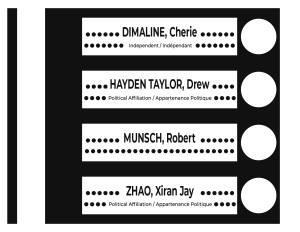
Two-Choice Ballot
In German national elections, voters cast two votes. One is for a local candidate while the other is for party representatives at the national level.
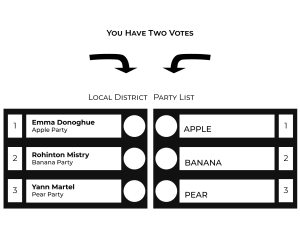
Ranked Choice Ballot
Some American States, such as Maine, use ranked-choice voting, where voters rank the candidates in order of preference.
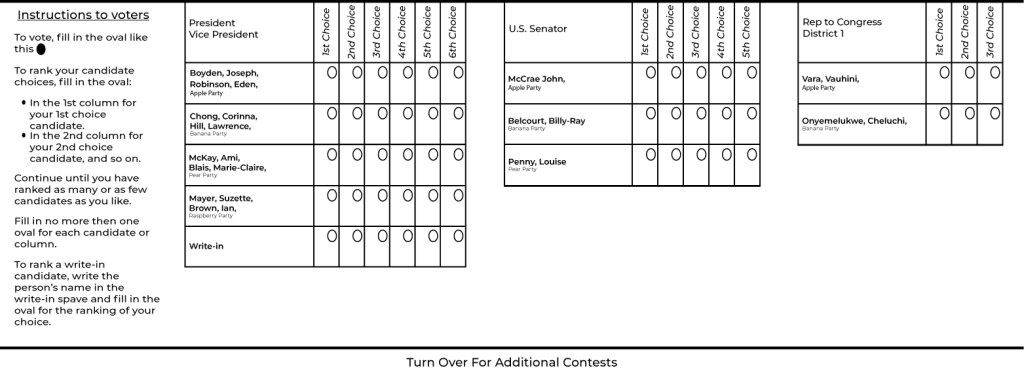
Ballots With None of the Above Options
In some electoral systems, voters have an opportunity to express a non-preference. For example, this ballot from Nevada gives voters the option of choosing None of these candidates.
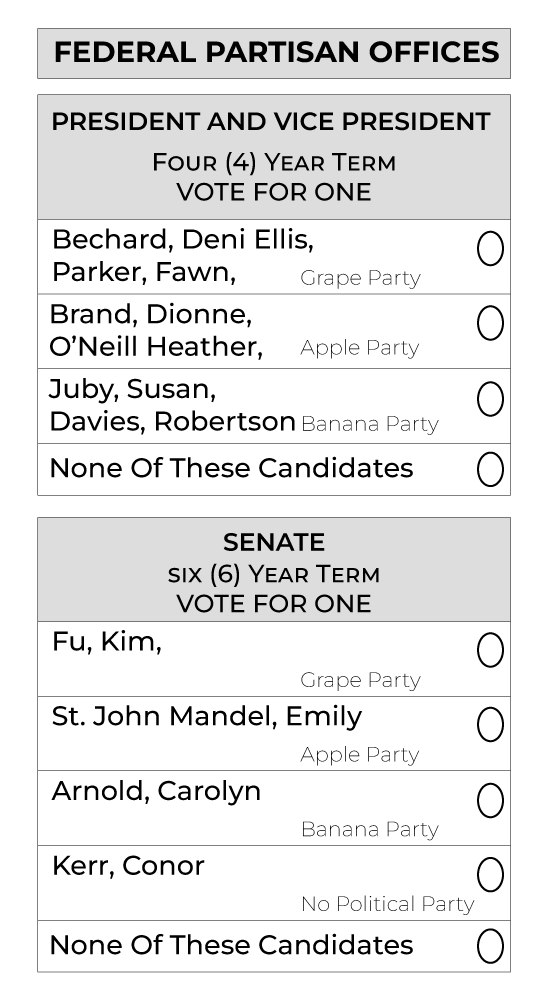
Ballots With Weird Graphics
Ballots in New York State once had a requirement that each candidate’s row begin with a graphic pointing finger.
